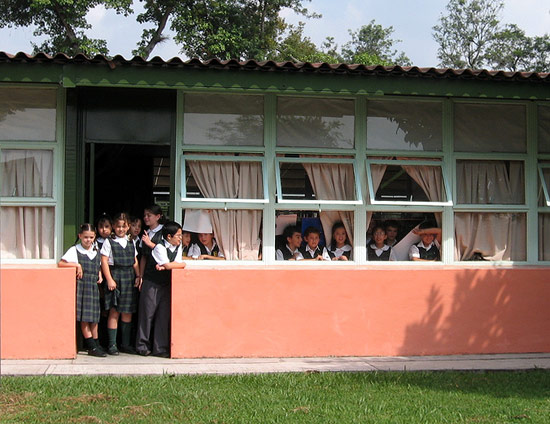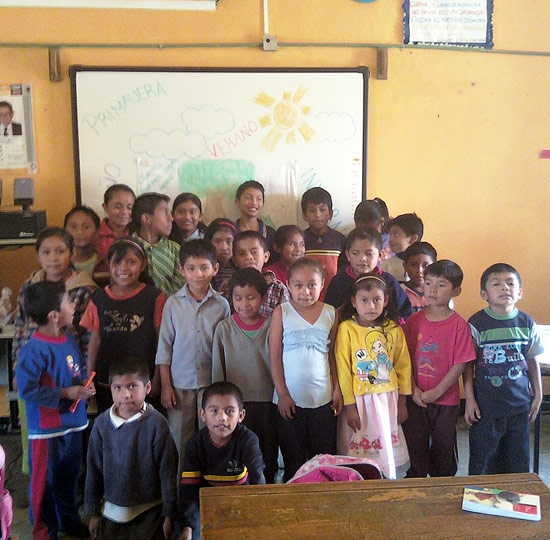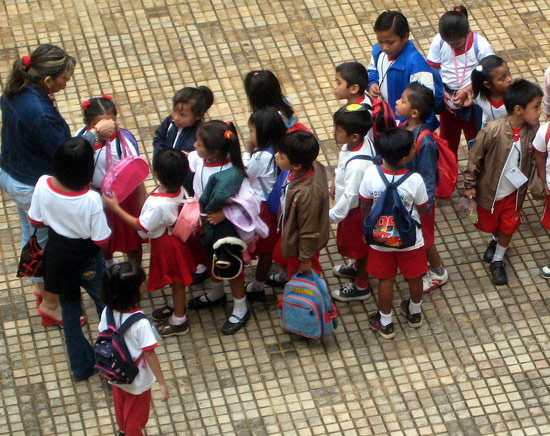Education: Education Structure
Introduction
Children in Mexico begin compulsory education at the age of six and continue through to the age of 15. This covers primary and secondary education, collectively referred to as basic education in Mexico. Preschool education is also considered to be part of basic education, and is therefore provided free of charge. Given the importance attached to preschool education, the third year (at age five) is shortly to become compulsory.
Girls and boys are educated together in state schools. Not all schools require uniforms. Many state elementary schools do not require uniforms, but secondary schools do require them. The general fashion is white shirts, ties, sweaters, and grey pants or skirts.
Spanish is the primary language of instruction. Depending on the school, a bilingual education may be offered from the beginning, where half the day instruction is in Spanish, and the rest is in a second language, for example, English or French.
Formal structure of the school system
Primary
Type of school providing this education: Escuela Primaria
Length of program in years: 6 years
Age: 6 to 12 years
Certificate/diploma awarded: Certificado de Primaria
General Secondary
Type of school providing this education: Secundaria General
Length of program in years: 3 years
Age: 12 to 16 years
Certificate/diploma awarded: Certificado de Secundaria General
Technical Secondary
Type of school providing this education: Telesecundaria, Secundaria técnica
Length of program in years: 3 years
Age: 12 to 15 years
Certificate/diploma awarded: Certificado de Secundaria
Higher Secondary
Type of school providing this education: Educación media superior
Length of program in years: 3 years
Age: 16 to 19 years
Certificate/diploma awarded: Certificado de Bachillerato general, Bachillerato tecnológico, Educación profesional técnica
Specialized Secondary
Type of school providing this education: Secundaria para Trabajadores
Length of program in years: 3 years
Age: 16 to 19 years
Certificate/diploma awarded: Certificado de Secundaria
Primary education lasts for six years leading to the Certificado de Primaria. Primary schools may also be referred to as elementary school. All pupils progress onto secondary education, which is also compulsory.
At the secondary education level, pupils are separated into either academic or technical streams. General secondary schools provide an education aimed at moving students into higher education, while technical secondary education provides vocational training. Upon completion of the three-year escuela secundaria, students receive a comprehensive transcript that allows them to apply to a higher-secondary school.
Higher-secondary education is non-compulsory and lasts for a further three years, to the age of 19. These schools are generally preparatory schools affiliated with, and under the auspices of, public autonomous universities. The program leads to the Bachillerato general or the Bachillerato tecnológico, the internationally accepted entrance qualifications for higher education.
School Timetable
The school year in Mexico is nine months long. It starts in September and finishes in the last weeks of June with two-week breaks from December to January and again at Easter (Semana santa). The Secretariat of Public Education issues the school calendar that all public schools observe.
Term dates: (One) September to mid-December, (Two) January to Easter, (Three) Week after Easter to end of June
School days: Monday to Friday
School hours: 08:00 to 13:00
Grading System
Secondary schools in Mexico generally grade on a 10-point scale, with 10 being the highest score, 6 being the minimum passing grade, and 0 being the lowest score.
Higher education institutions in Mexico generally grade on a 10-point scale, where 10 is excelente (excellent), 9 is muy bien (very good), 8 is bien (good), 7 is suficiente (passing), and 5 or lower corresponds to reprobado/no suficiente (failing).
Some schools use a letter grading system as follows: MB (maximum), B, S (minimum passing grade), and NA (failing grade).
Cost of Schooling
Public schools do not charge school fees, but parents must pay for equipment such as schoolbooks and materials, as well as uniforms and sports equipment where required. Each year since 1964, the federal government has provided free textbooks to every Mexican student in primary schools. Secondary school students must pay for their texts.
In Mexico, public spending allotted each year for education exceeds the entire budgets of Latin American nations such as Costa Rica, Guatemala, Peru, Bolivia, and El Salvador. The vast majority of this budget (over 90 percent) goes to pay teacher salaries. The remainder is spent on infrastructure, new construction, curriculum development, and equipment. School resources vary widely. As with many developing countries, there is huge disparity between rural and urban schools; the latter tend to be better resourced than their rural equivalents.
Special Schools
Current education policy in Mexico states that integrating children with special learning needs into regular schools must be attempted, but if it fails for a given child, that child has the right to an alternative setting. Centros de Atención Múltiple (CAMs/Multiple Attention Centers) provide education for such children.
CAMs are alternative settings or special schools designed to provide instruction to preschool through to high school students who are unable to integrate successfully into regular classroom situations. The centers are organized by age and work to educate students with diverse disabilities in the same group. Each center maintains autonomy in organizing, planning, and instruction of their students.
Although around 90 percent of the population of Mexico is Roman Catholic, the constitution requires that one religion or its members may not be given preference in education over another. Religious instruction is prohibited in public schools; however, religious associations are free to maintain private schools, which receive no state funding.
Curriculum
State schools abide by nationalized curriculum mandates. Patriotic exercises take place every Monday, in which the children display the flag, sing the national anthem, and listen as adults exhort them to be respectful and conscientious students. Throughout primary school, the curriculum emphasizes Spanish language, mathematics, geography, and ecology. Even in primary schools, the curriculum includes in-depth learning of health and human sexuality.
The secondary school curriculum requires students to study a foreign language each year. Science is also required, although the lack of laboratory facilities in many schools limits possibilities for experiential learning. All students take courses in the arts and technology, although the latter may be hampered by inadequate equipment such as computers. By the time they enter upper secondary school, Mexican students must choose a program that will lead them to college study, a technical career, or business.
Secretaría de Educación Pública/Secretariat of Public Education
Argentina #28
Centro Histórico México D.F. C.P
06029
Tel. [52] 55 3601 1000
www.sep.gob.mx
Copyright © 1993—2024 World Trade Press. All rights reserved.

 Mexico
Mexico 

